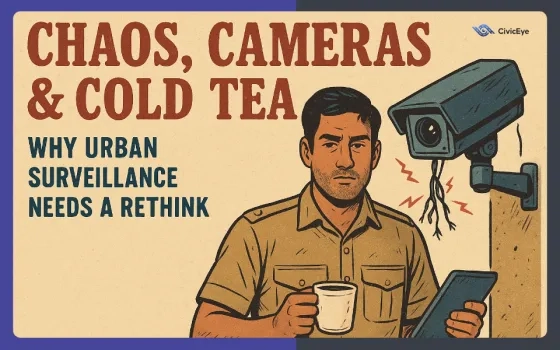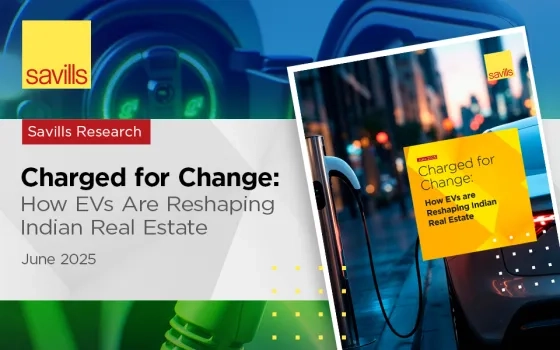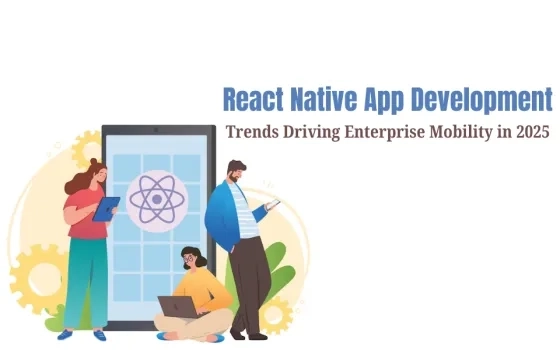
Figure 1 [1]
Improvement of transportation conditions due to traffic congestion problems is high on the Indian government’s agenda for urban cities like Mumbai. India, one of the fastest growing economies in the world, is achieving a growth rate of 7.5% per annum. With a growing population too, the country is working hard to transform itself over the next few decades.
According to the Census 2011, at least 377 million Indians, comprising about 31 per cent of the country’s population, live in urban areas. Today, India’s urban population is more than the entire population of a country like United States of America or Brazil. The urbanization level in India is set to further increase and the urban population is expected to reach about 600 million by 2030. Unfortunately, today we are witnessing more and more congestion on the streets of our cities which is leading to problems like road accidents, air and noise pollution, posing serious health hazards for citizens [2]. To build inclusive, safer, and more sustainable cities of tomorrow, technology will play a decisive role in identifying mobility gaps and transforming existing transportation services.
Mumbai is one of the most highly populated cities and is the capital city of Maharashtra, also called the financial capital of India. With a population of 21.3 million and a high population density of nearly 21,000 persons/square km, the demand of proper transportation system and the role of the transportation system in the lives of the average earning population are crucial. Currently the majority of Mumbai’s population relies on the bus and public rail services.
The expansion and growth of buses as well as rail transportation modes in Mumbai has proven to be insufficient to match the growth of population in this hub of business. There are other new modes of transportation like metro rail, mono rail and electric buses which are also being introduced in the city and have low carbon foot prints and provide better services i.e. less noisy, air conditioned, less commutation time.
Major modes of transportation
- Railways (Mumbai Suburb Rail)
Mumbai suburban railway is the lifeline of the city, as per the recorded data, more than 80% of all the motorized trips are undertaken on public bus and rail services and more than half of the trips of public transport mentioned above are taken on the rail services.

Figure 2: Mumbai Suburban Map [3]

Figure 3: Mumbai Suburban [4]
Approximately 8 million commuters use the 2900 trains of the suburban rail system. During peak hours these trains are overcrowded to nearly four times the network’s capacity.
Various initiatives are taken by the state government to improve the condition of the suburban railway system along with the World Bank, named the Mumbai Urban Transport Project (MUTP I, II & III) [5].
BEST (Brihanmumbai Electric Supply & Transport) introduced Mumbai to its first bus and finally on 10th February of 1926 as replacement of tramcars. The popularity of motor buses increased exponentially, and people started using buses frequently for traveling as it used to be a faster way to travel as compared to tramcars. With the frequent availability of buses, its regularity, quickness, and cleanliness, people started preferring motor-buses above any other mode of transportation.
Within a year the fleet of motor-buses started to expand to meet the public transportation service demand. To meet the public demand, the public started hiring private buses by the end of the first year, 600K passengers used the service and in the next year with the help of better management and addition of new fleet, the figure rose to 3.8 million. Since then BEST is one of the major modes of transportation in Mumbai. Due to various reasons, now BEST services are in trouble and unable to provide the increasing demand of bus services, Increasing the Mumbai population [7], increasing the private car density (the highest density is 430 cars per kilometer[8]), the fleet of BEST has not shown the same growth as the population of Mumbai (fallen 21 percent in last 5 years [9]) , high road accidents [10], and financial crisis [11] are some of the major issues.
From older facilities like share-an-auto services, to infrastructure projects like the Mumbai Metro and the Mumbai Monorail, to private sector offerings like app-driven private taxi services by, all have taken passengers away from the BEST.
Over the past 5 years, the number of vehicles in Mumbai has grown from 200K to 300K, an increase of 50%, however the road length in Mumbai, at around 2,000km, has not changed significantly during the period. The main reason for people to buy private vehicles are inefficient public transport and easy availability of car loans for buying vehicles. These private vehicles are responsible for increasing the vehicle density in Mumbai and lead to traffic issues and encroachment of public roads due to lack of sufficient parking spaces in the city.
To reduce private vehicles in urban areas and boost public transport, the state government has come up with a new urban transport draft policy which has suggested introducing additional charges to the cost of vehicle and high parking charges based on location [13].
Modernization projects in Mumbai

Figure 4: Mumbai Metro [15]
Mumbai Metro is a rapid transit system serving the city of Mumbai. The system is designed to reduce traffic congestion in the city, and supplement the overcrowded Mumbai Suburban Railway network. It is being built in three phases over a 15-year period, with overall completion expected in 2025. When completed, the core system will comprise of 8 high-capacity metro railway lines, spanning a total of 235 kms (146 mi) (24% underground, the rest elevated, with a minuscule portion built at-grade), and serviced by 200 stations. Line 1 is operational now. The status of the project is as follows:

Figure 5: Mumbai Metro master plan [16]

Figure 6 : Mumbai Monorail [18]
Where the systems like the Metro cannot be implemented, Monorail can be easily implemented and can negotiate sharp turns and climb up and down steep gradients easily. The system started commercial operation after partially opening its Phase 1 to the public in 2014. Upon the completion of entire Phase 1 in mid-2017, the Mumbai Monorail is set to become the fifth-largest monorail system in the world.
The cost of the monorail service was estimated in 2010 to be ?2.0 billion (roughly ?850 million (US$13 million) per km). Approximately 135 kms (84 mi) of line is planned to be built in phases between 2011 and 2031.
The Mumbai Monorail master plan proposed the construction of 8 lines at a cost of ?202.96 billion (US$3.2 billion).

Figure 7 : Mumbai Monorail master plan [19]
Introduction of new e-buses, run on lithium ion batteries. Unlike the buses run on fossil fuels, they do not have an engine, gearbox or clutch. Electric motors ensure that they are noiseless and smokeless. They are more eco-friendly than hybrid electric and compressed natural gas-run buses.
Figure 8 : Mumbai Electric Bus [21]
- Virtual Taxi, Bus and Auto Apps [22]

Figure 9 [23]
The simplest way to grab a cab today is to reach into your pocket and use an app. Whether you’re running late for work or feeling too lazy to get bothered by the super-dense crush load of local trains, there’s a cab for every occasion. There are loads of superb apps for booking cabs on the go. We have plethora of options for Mumbai such as Meru, Ola, Uber, Easy Cab, Taxi for Sure, and Tab Cab. So just sit back, relax, & plan your itinerary.
rBus, Cityflo and OfficeBus offer point-to-point private bus services to many areas of Mumbai city. And apps such as Jump In Jump Out, LiftO, BlaBlaCar and Tripda allow people to seek out or offer lifts and share the cost of commuting by taxi or autorickshaws in addition to private vehicles.
All these services are less than a 2-3 years old, set up by young entrepreneurs who spotted a gap in the market. The main features of these services are ease of use and flexibility, the new contract carriage services offer better infrastructure (air-conditioning, wifi, reclining seats, water bottles and newspapers) and even a sense of community.
Hurdle for new Innovative Solution in transportation:
In the absence of reliable travel data for Mumbai city, until now, has made it difficult for public officials to assess the impact of infrastructure projects on urban mobility and to identify future needs. This is no longer the case with developments in geo-mapping technologies and open standards, with GTFS (General Transit Feed Specification) being the most commonly used. Transit agencies need to make GTFS feeds on routes and schedules and GIS locations on transport infrastructure publicly available. Some transit agencies have also released data sets on budgetary, performance and ridership data.
Scope of ICT in transformation of Mumbai Transportation [24]
The ICT sector contributes about 2% of global Carbon dioxide (chemical formula CO2) emissions, but can help to eliminate a significant portion of the remaining 98% from other industries. Fully integrating transport infrastructure, vehicles and users with ICT has been shown to significantly reduce environmental impact and deliver improved safety and efficiency. It also enables the connectivity required to support infrastructure for future green vehicles (electric vehicles).
As suggested by an ICT Industry leader, the state can have a strategy in 2 parts to drive the transformation. Firstly, working in partnership with local academia/university to develop intelligent ICT-enabled solutions, including primarily operators but also utilities, transportation, governments and others. And secondly actively engaging with stakeholders and policymakers regionally and nationally to inform public policy and to drive initiatives to accelerate the potential of broadband to transform cities, reduce carbon, increase efficiency, spur innovation, and enhance life quality.
The approach to connecting the transportation industry can be focused on providing solutions in three stages: connected, cooperating and automated.

Figure10: Transformation in transportation [25]
The first stage is all about connecting different elements of the transport ecosystem – vehicles and the infrastructure that supports their mobility like roads, traffic lights and bus stops – through wireless sensors. The three main challenges within transportation are safety, efficiency, and sustainability; connectivity is the first step to improving all three of these.
The Connected Urban Transport is a completely new way to connect everything and everyone that moves. It is a solution that enables data sharing and takes interaction between infrastructure, traffic and all stakeholders to a new level. It is an important cornerstone in the transport industry’s transition from merely being connected, to being cooperative and automated. The Connected Urban Transport gives transport authorities and cities the ability to aggregate and analyze diverse, real-time data from connected vehicles, infrastructure, and devices. The solution thereby expands their insights and assists with operational decision-making.
The scope of the connected urban transport:

Figure 11: Connected Urban transport [26]
- Combine and control: Collect real-time data from vehicles, roadside infrastructure and travelers. Allow data sharing to proactively deliver timely and accurate information to the right recipients.
- Predict and suggest: This out-of-the-box software enables monitoring, managing and sharing of real time traffic data and road condition data, between people, various modes of transportation and authorities.
- Turn your insignts into actions: When traffic and road information is allowed to interact, it is possible to proactively deliver the right information to the right stakeholders. This will give us a more efficient and sustainable urban environment with a new range of digital services. With real time insight, traffic flows can ultimately become automated.
Solution for integrated mobility
Multi-modal fare collection offers a sole source for trip planning, mobile ticketing and payment and connected multiple transport service providers. With one solution, mobility service providers can now offer citizens a seamless transportation experience that can also reduce the need for exclusive reliance on private cars.

Figure 12 : Integrated Mobility [27]
- Provides one-stop-shop access for trip planning and payment.
- Supports new business models and partnerships.
- Creates personalized solutions to meet traveler’s preferences.
For example, Implementation of an Intelligent Transportation System (ITS) that fully supports the public buses operation can be implemented, this ITS may include:
- Integrated E-ticketing system for BEST Buses, Rail System, Metro and Monorail
- System for automatic vehicle location (AVL)
- Real Time Passenger Information system (RTPI)
- Traffic management system that provides priority to buses
- CCTV system at intersections and bus stops
- Control Rooms
Conclusion
Any mobility crisis is a unique one, seeing as it involves a multitude of actors from transit agencies to ICT entrepreneurs. To meet the challenge effectively, a dialogue between stakeholders is essential to evaluate assets and to devise innovative mobility solutions. New mobility is a lucrative industry — one that can serve local communities and provide opportunities to many. As the Mumbai state government looks to make sustainable urban transport a priority, Mumbai can become a model for policymakers and entrepreneurs in India to use ICT to provide customized, safe and sustainable transportation to all.
Reference Links
[1]:https://i.pinimg.com/736x/ce/b8/96/ceb89617ac20273062a715a2d6b884a5–mumbai-metro-gazette.jpg
[2] :HPEC ,20110
[3]:https://goo.gl/KPvmZx
[4]:http://images.indianexpress.com/2015/02/mumbai-local.jpg
[5]:https://mmrda.maharashtra.gov.in/
[6]:http://theory.tifr.res.in/bombay/history/transport.html
[7]:http://www.indiaonlinepages.com/population/mumbai-population.html
[8]:https://timesofindia.indiatimes.com/city/mumbai/At-430/km-Mumbai-has-highest-car-density/articleshow/52825161.cms
[9]:https://www.mumbailive.com/en/transport/best-buses-losing-cache-with-citizens-12906
[10]:http://indianexpress.com/article/cities/mumbai/ministry-releases-data-road-accidents-in-2016-mumbai-5th-among-50-4832103/
[11]:http://www.thehindu.com/news/cities/mumbai/in-the-red/article18344667.ece
[12]:https://timesofindia.indiatimes.com/city/mumbai/no-of-vehicles-in-city-up-50-in-5-yrs/articleshow/56302918.cms
[13]:https://timesofindia.indiatimes.com/city/mumbai/state-draft-proposes-costlier-vehicles-high-parking-fees/articleshow/59042684.cms
[14]:https://en.wikipedia.org/wiki/Mumbai_Metro
[15]:Image 4: http://mumbai-metro.com/wp-content/uploads/2017/01/1a.jpg
[16]:Image 5: https://en.wikipedia.org/wiki/Mumbai_Metro
[17]:https://en.wikipedia.org/wiki/Mumbai_Monorail
[18]:http://static.financialexpress.com/m-images/M_Id_458919_Mumbai_monorail.jpg
[19]:https://en.wikipedia.org/wiki/Mumbai_Monorail
[20]:http://www.hindustantimes.com/mumbai-news/after-45-years-electric-buses-return-to-mumbai-s-streets/story-MrC7M868xiwpti5TAPtkbO.html
[21]:https://i.ndtvimg.com/i/2017-11/goldstone-electric-bus-mumbai-best_827x510_51510339222.jpg
[22]:http://www.hindustantimes.com/mumbai/new-apps-virtual-taxi-sharing-solutions-fill-gaps-in-mumbai-s-transport-system/story-1lnXJVGLXoXh15vTYL7HfJ.html
[23]:https://goo.gl/XmhURH
[24]:https://www.ericsson.com/en/industries/intelligent-transport-systems/solutions/integrated-mobility
[25]:https://goo.gl/egLJ4C
[26]:https://www.ericsson.com/assets/global/scaled/cut-demo-image_470x265_90_167587.jpg
[27]:https://www.ericsson.com/assets/global/scaled/_dsc7615_retouched-2_594x396_90_43497.jpg
Appendix
- BEST – Brihanmumbai Electric Supply and Transport
- MMRDA – Mumbai Metropolitan Region Development Authority
- MUTP – Mumbai Urban Transport Project
Note : This article is first published on http://iglus.org/mumbai-transportation-system-transformation/ .
Save















